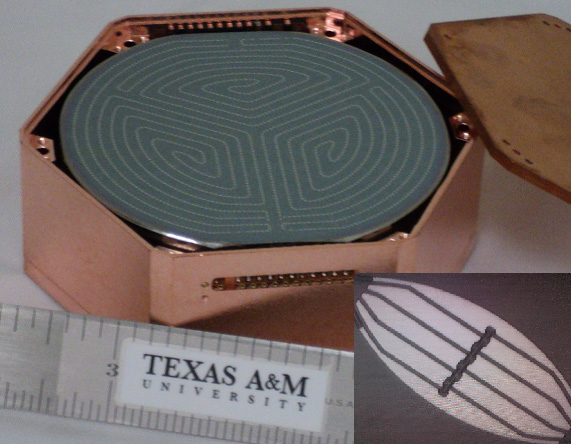Detecting dark matter: Agencies agree to fund next iteration of tests
Image: Texas A&M College of Science
Texas A&M University is involved in two of the three dark matter experiments — including both of the ones searching for weakly interacting dark matter particles — selected for future funding by the U.S. Department of Energy (DOE) and the National Science Foundation (NSF).
The DOE’s Office of Science and NSF’s Physics Division on July 11 announced they will back the Super Cryogenic Dark Matter Search, or SuperCDMS-SNOLAB experiment; the LUX-Zeplin experiment, or LZ; and the next iteration of the Axion Dark Matter Experiment, ADMX-Gen2. All three are classified as second-generation dark matter experiments because each will be at least 10 times as sensitive as the current standard in dark matter detection.
Texas A&M scientists are longtime collaborators in the LZ and SuperCDMS experiments, both of which are located underground and searching for WIMPs, or weakly interacting massive particles. ADMX-Gen2 will search for a different kind of dark matter particles called axions.
Texas A&M’s Robert C. Webb, holder of the Ed Rachal Chair in High-Energy Physics, is a principal investigator in LZ, which is based in South Dakota and managed by DOE’s Lawrence Berkeley National Laboratory. In addition, Texas A&M high-energy physicists Rupak Mahapatra and David Toback and condensed matter physicist H. Rusty Harris are principal investigators in SuperCDMS, now situated in Ontario, Canada and managed by another DOE power player, Fermi National Accelerator Laboratory.
“The DOE and NSF have selected the programs best suited to take the hunt for these elusive particles to the next level of sensitivity, and Texas A&M is involved with two of them,” Webb said. “This is a very exciting time for dark matter research, and both teams are hopeful that going to this next level of sensitivity will enhance our chances of discovering these objects.”
#TAMUresearch


